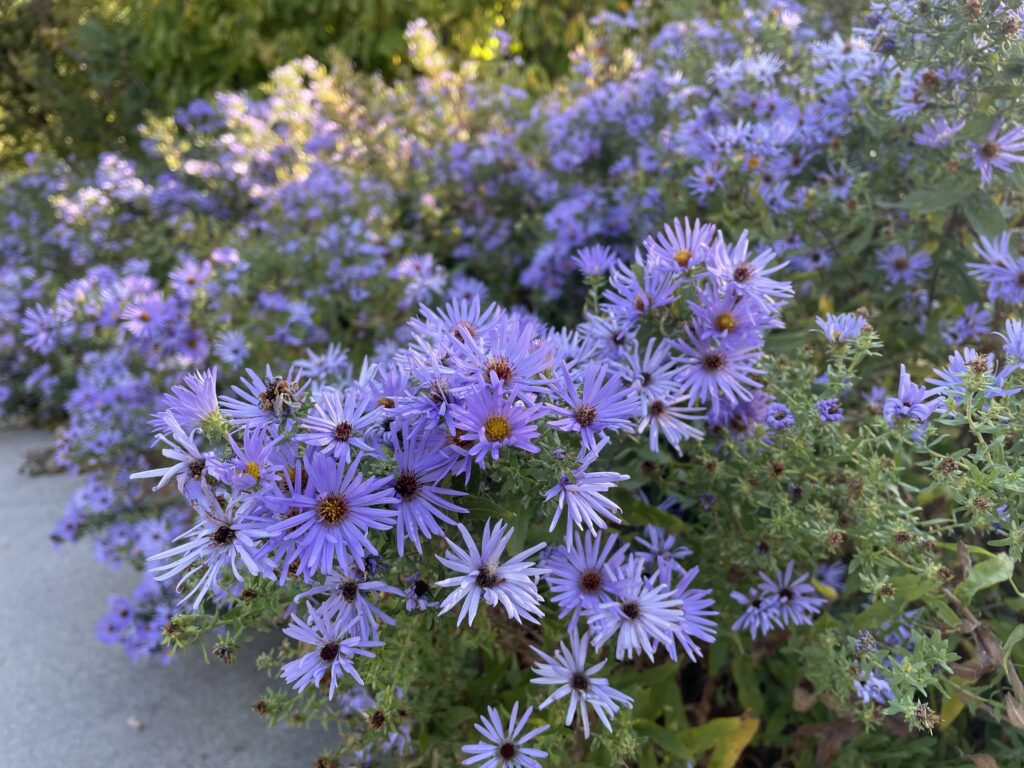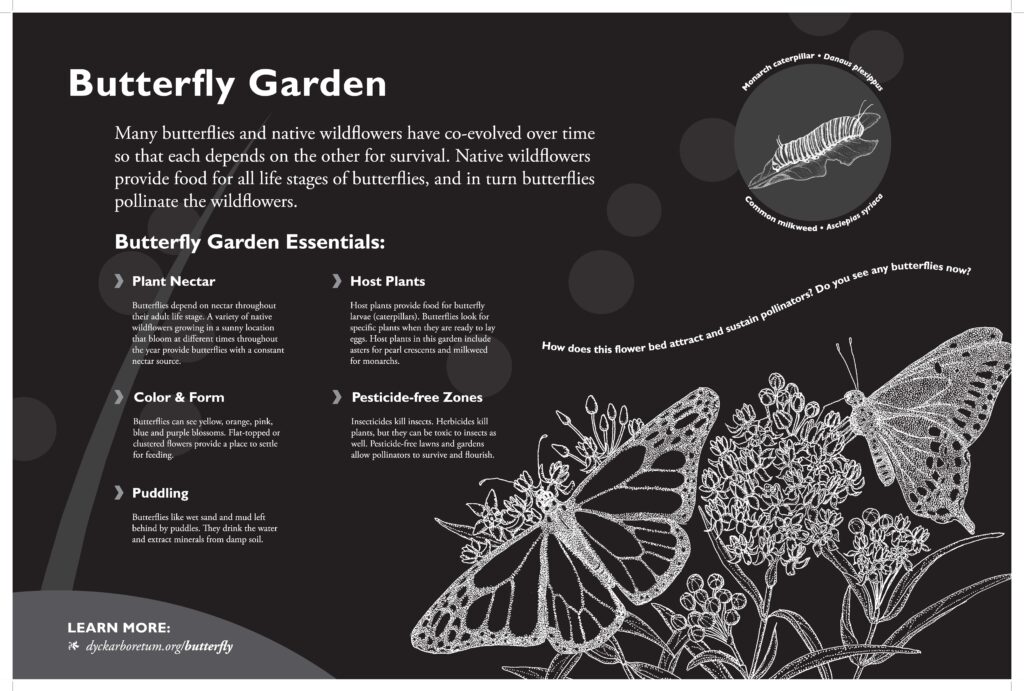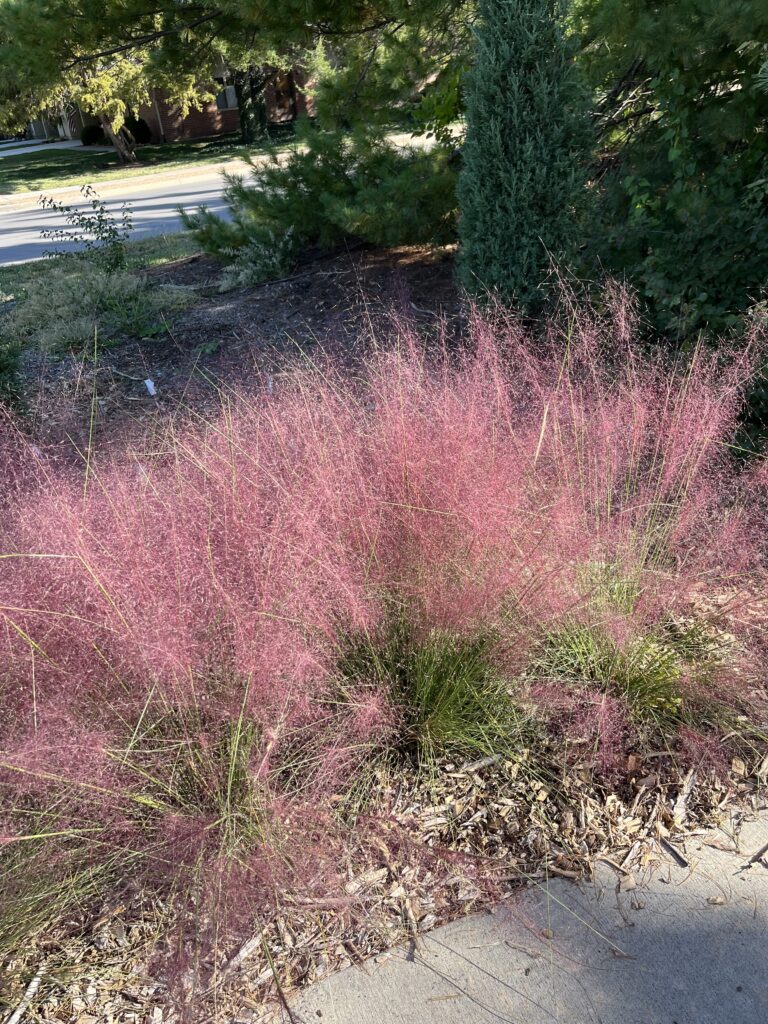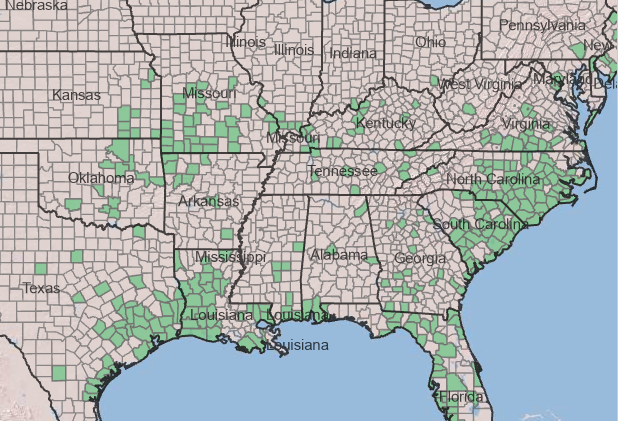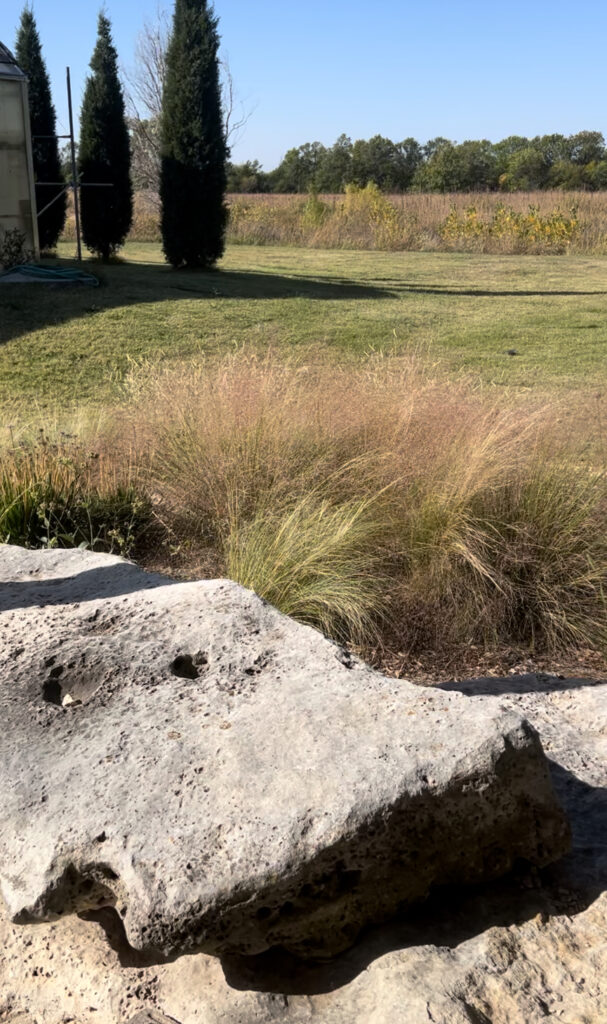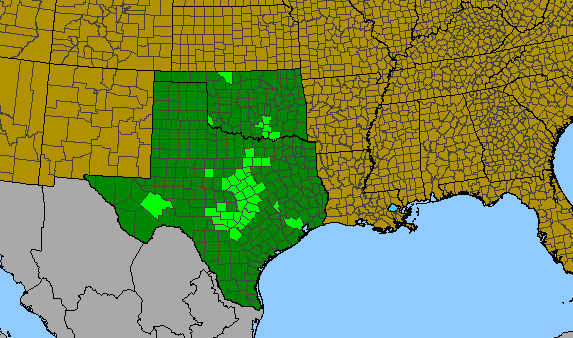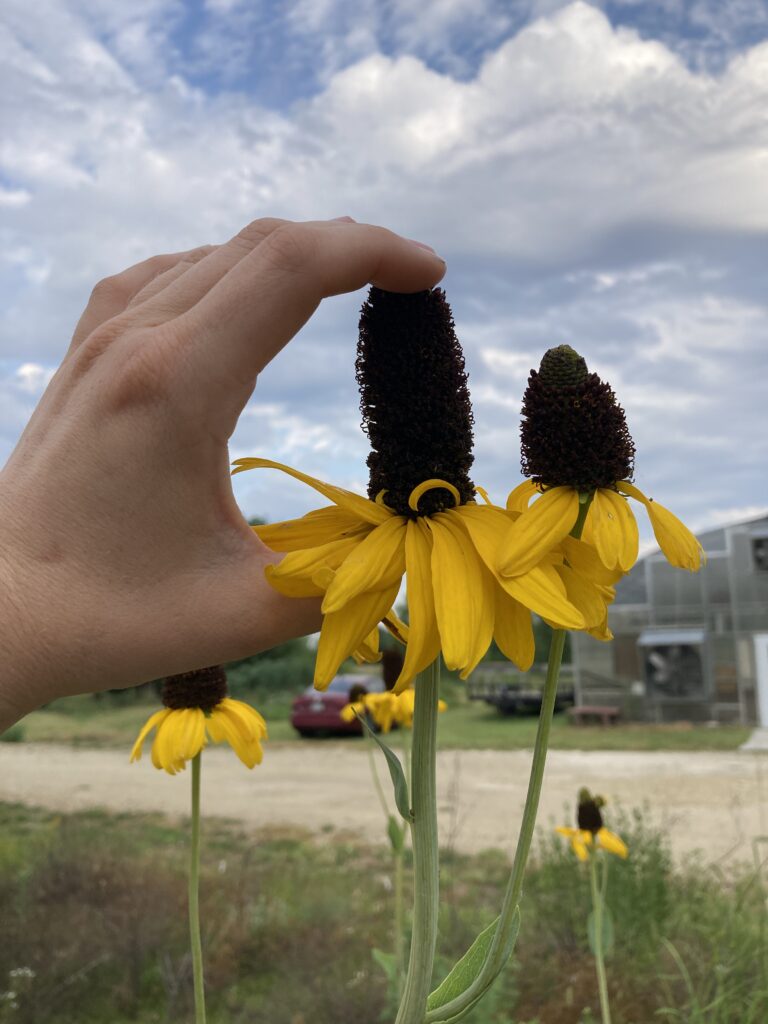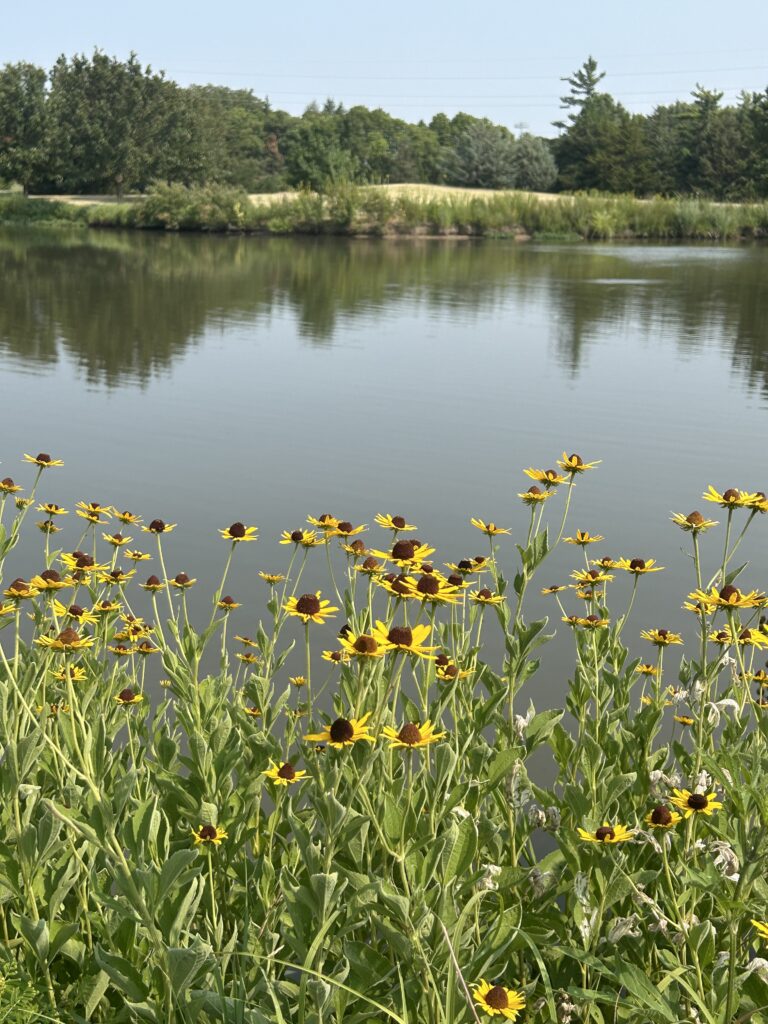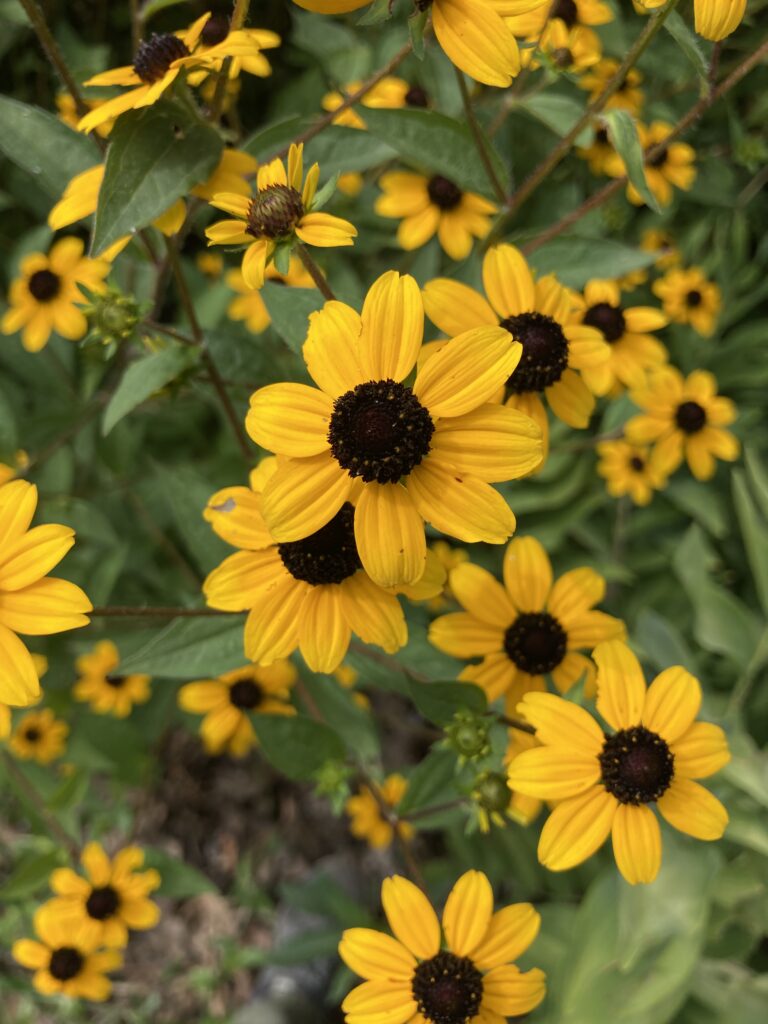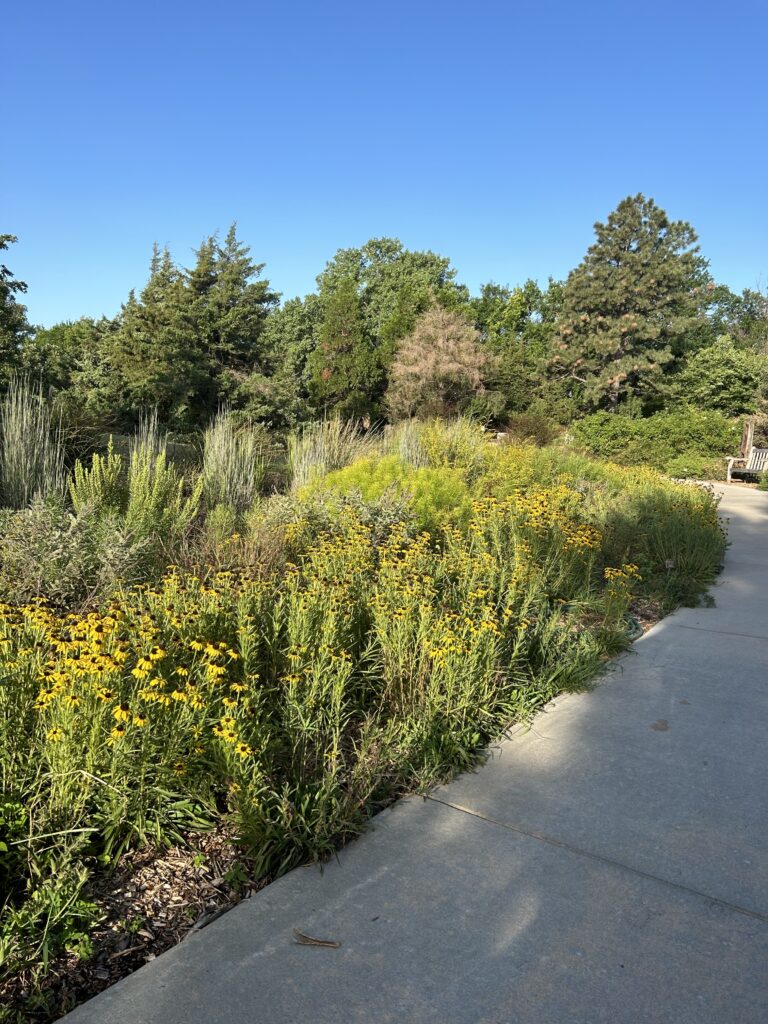One of my favorite prairie wildflower species has to be aromatic aster (Symphyotrichum oblongifolium). Aromatic asters are hardy, drought-tolerant forbs that bloom toward the end of the growing season. Their leaves have an herbal scent when crushed. Aster species are host plants for caterpillars of butterflies including painted ladies, pearl crescents, and silvery checkerspots as well as many species of moths. In the late summer and fall, aromatic aster flowers delight the human need for color and provide nectar for many insects, most notably, butterflies, bees, wasps, flies and beetles.
According to Mike Haddock at Kansas Wildflowers and Grasses, aromatic aster is found across almost the entire state of Kansas on dry, open prairies. In our Dyck Arboretum reconstructed prairie, aromatic aster (seed collected from the Smoky Hills ~30 miles north of Hesston) is just about finished flowering. Its purple hues popped a couple of weeks ago among the reddish-brown colors of senescing warm-season grasses.
A Star in the Prairie Garden
In our native plant gardens, aromatic aster is the star of a show that we have been looking forward to all growing season. Aromatic aster fills garden spaces between other plants nicely where its dense, low 1′-2′ foliage crowds out weeds and lends above-ground support to neighboring plants. But its late-season flowers are the main reason that this species is a dominant part of our featured Butterfly Garden.
While I enjoy observing all prairie flowers throughout the growing season and the pollinators they attract, aromatic asters just seem to take the human entertainment value to a higher level. Given the high number of flowers on each plant and the lack of anything else blooming this time of the year, this species usually seems to put on the greatest show of the year as it plays host to a busy array of insect pollinators.
The two varieties of aromatic aster in our Butterfly Garden are ‘October Skies’ and ‘Raydon’s Favorite’. They bloom at different times and in nice succession for a long season of attracting pollinators. I seem to usually observe the former blooming from late September to mid October and the latter from mid October to early November.
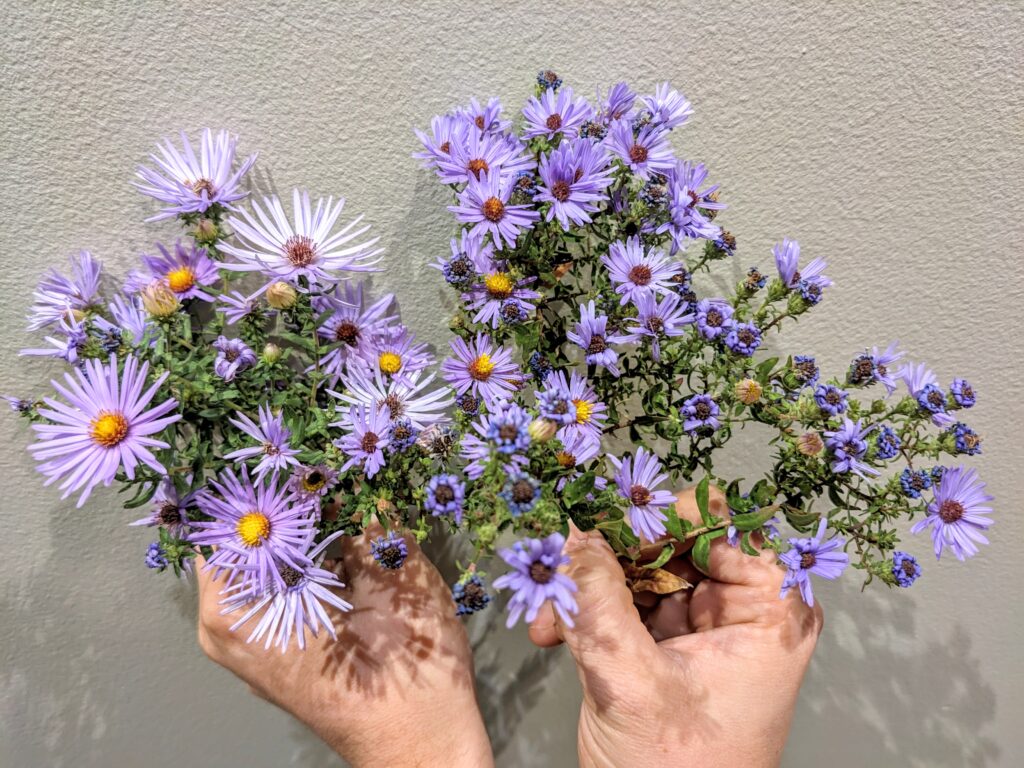
Whether I’m walking with elementary schoolers, college students or retired master gardeners, this Butterfly Garden spot on a sunny afternoon is always a regular stop. The flowering spectacle by aromatic aster in this time of the year is one of my favorite flower/pollinator interactions in the prairie garden.
When trying to capture the jaw-dropping wow factor of a landscape scene like the Flint Hills or a Kansas sunset, a photo or video never conveys the inspiring scene I want. Nevertheless, here is a video of the super busy pollinator scene I witnessed yesterday (10/22/24).
13 Butterfly Species Observed
The butterflies I observed nectaring on the flowers of aromatic aster var. ‘Raydon’s Favorite’ yesterday included the following species: checkered white, sachem, common checkered skipper, fiery skipper, dainty sulphur, clouded sulphur, orange sulphur, eastern tailed blue, common buckeye, monarch, pearl crescent, Melissa blue, and American lady (not all species were visible in the video). Various species of bees (audibly busy), flies, beetles and moths were also abundant.
Stop by and see our Butterfly Garden before the aromatic aster finishes its show in the next week or two. Better yet, add different varieties of aromatic aster to a sunny spot in your landscape where you can enjoy a similar show for years to come.
For a broader review of asters in general, see my colleague’s great past posts, Asters: Autumn’s Crescendo and All About Asters.

